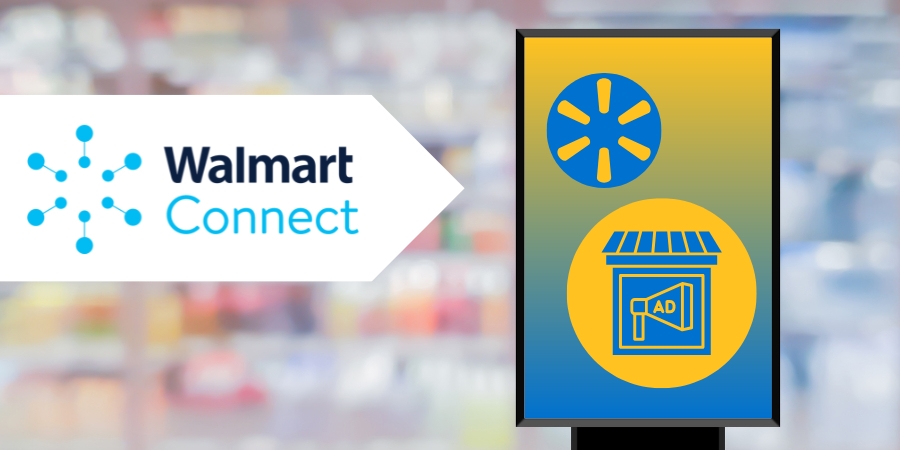
Photo: iStock
Walmart is leveraging its massive audience and store footprint to bring its U.S. retail media network, Walmart Connect, to the next level with spots on in-store radio and demo stations during the weekends at select stores — as well as greater use of in-store screens, according to CNBC. Getting partner brands in front of customers in-store and even at checkout could maximize the outreach of their ads, but the retail giant will need to take care that its ads don’t create undue friction in the shopping experience.
The inside of a Walmart store itself may be the ultimate channel for brands that sell at the retailer. Walmart operates nearly 4,700 stores in the U.S., and about 90% of Americans live within 10 miles of one. In the U.S., about 139 million customers visit Walmart stores and its website or app each week.
“When you think about our store, our store footprint and the percentage of Americans that we reach through our stores, we can deliver Super Bowl-sized audiences every week,” Ryan Mayward, SVP of retail media sales for Walmart Connect told CNBC.
Walmart Connect will utilize existing in-store technology to deliver ads to that massive audience and further build out the potential of its network. For instance, the 170,000 digital screens across its U.S. footprint, including those TV aisles and self-checkout lanes, will begin playing relevant ads targeting the specific store or region later in 2023. Walmart will also offer 30-second in-store radio spots to its suppliers.
The tech-focused opportunities will be joined by a modern version of an old supermarket favorite: the free sample. Walmart will sell sampling stations to advertisers on weekends, including putting QR codes at demo tables to let shoppers bring up inspiration such as meal ideas. The company will also bundle these opportunities with other ad formats that can run at the same time for a better-rounded advertising campaign. Walmart has been testing the new demo stations in Dallas-Fort Worth and is planning to roll out the option to more than 1,000 stores by the end of the year.
Walmart isn’t just innovating in-store. This fall, the retailer will partner with NBCUniversal to test out retail media-powered ads within live sports streaming. Participating brands will be able to use Walmart Connect’s targeting and measurement tools to reach viewers during live sports programs.
Ads are an overall small part of Walmart’s revenue — at $2.7 billion in net sales, compared to total revenue of $611.3 billion for fiscal 2023 — but that share is growing fast. Walmart Connect’s ad business rose about 40% in Q1 2024, while the global ads business grew by 30%. In comparison, consolidated revenue was up 7.6% during the same period.
Retail Media Is Lucrative, but Not at the Cost of Experience
It’s not hard to see why Walmart is pushing retail media. The space grew from $1 billion to $30 billion annually in just five years and is expected to hit $45 billion in 2023, according to Insider Intelligence. However, retailers need to balance the potential of in-store advertising against the potential headache it could cause for shoppers.
Perhaps the first cautionary tale can be found at Walgreens, which had planned to install Cooler Screens’ digital screens in at least 2,500 stores. The initial results were promising, but in time there were reports of shoppers complaining about the electronic doors on social media, including expressing annoyance at the ads they played and claiming they displayed products that weren’t actually in stock.
The issue came to a head in June, when Cooler Screens sued Walgreens for reportedly shutting down the rollout in a breach of contract, according to the Chicago Tribune. The suit claims that Walgreens CEO Roz Brewer “purportedly compar[ed] the screens to ‘Vegas’ in a derogatory way” during a store visit.
Walgreens has disputed Cooler Screens’ claims and holds that it terminated the contract based on a “failure to perform,” according to CNBC.
However, Walmart’s Mayward noted that the company has been adding more advertising “in a very deliberate and cautious way” based on what it learned from how shoppers respond to online ads. A measured approach could prove to be very profitable for the retailer and its brand partners alike.


Leave a Reply
You must be logged in to post a comment.